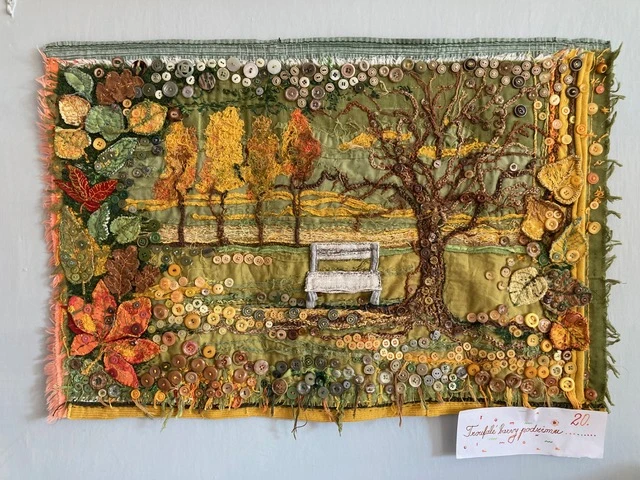Gallerist Růžena Bílková
April 15, 2025 / 8:11 AM
Růžena Bílková was born in Čkyně, in the Prachatice region of the Czech Republic. She spent her entire life there with her family, working as an office clerk and laborer. It wasn’t until retirement that she finally had enough time to fully devote herself to her passions – art, handicrafts, and collecting. Her fascination with old objects led her to the technique of collage, which incorporates even seemingly useless materials. Over time – and quite by chance – her interest shifted from old postcards and dried plants to working with buttons.
It all began with a few antique glass buttons gifted to her by her aunt. The idea of creating colorful tapestries was also inspired by her collection of textiles, fabric scraps, colorful threads, yarns, lace, and her love of finding new ways to repurpose old things. As the number of finished pieces grew, so did the number of buttons. It was as if those donating their old mother-of-pearl or metal buttons had rediscovered their charm and artistic potential through Mrs. Bílková’s work.
Her artwork has been exhibited on several occasions. The premiere exhibition took place in her hometown of Čkyně in 2020 and was a great success among locals—many of whom brought her additional materials to work with. This was followed by shows at SeniorPoint in Prachatice in May 2021 and at the South Bohemian Scientific Library in České Budějovice in November 2023.
The artist shows deep respect not only for the buttons but for all the components of her pieces. She handcrafts both embroidery and patchwork fabric backgrounds. That’s why a single tapestry takes countless hours of meticulous work—threading needles and making stitch after stitch.
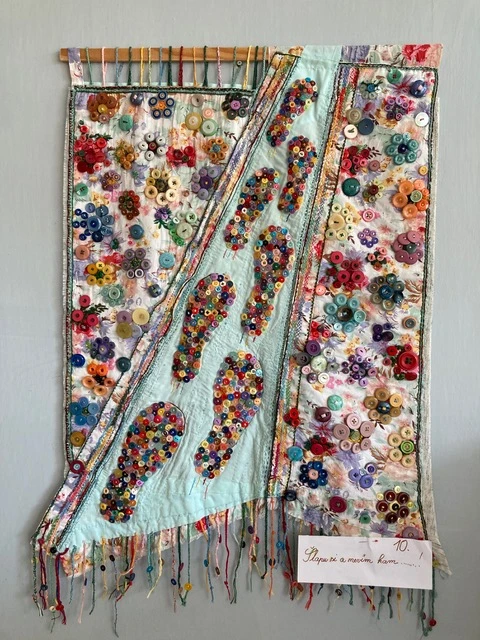 | 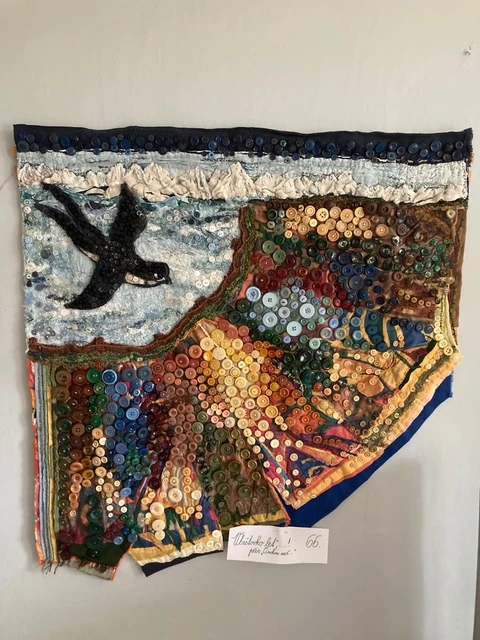 | 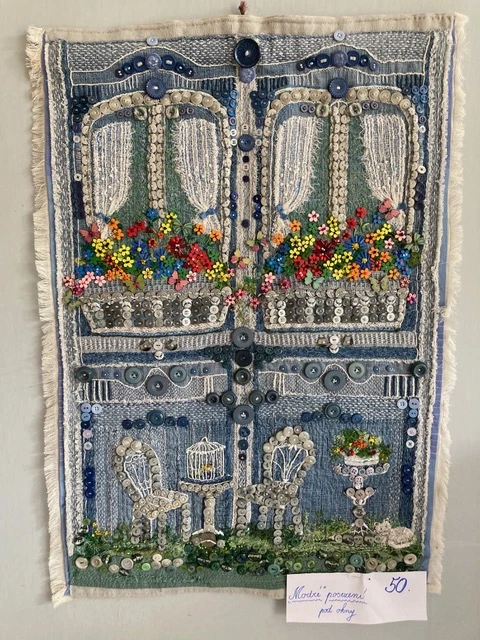 |
Her inspiration comes from the world around her, but she always considers the materials, origins, and original purpose of each button. Buttons are the main element of her artwork, and the ideas for each piece are built around them. Blue-and-white ceramic buttons, for instance, reminded her of traditional Czech porcelain, inspiring a tapestry with two rounded jugs at the center. A hunter’s cap appears to be surrounded by buttons shaped like wild boars or deer—made from antlers. Golden buttons become pots filled with coins or a wish-granting fish in a sea that truly appears to ripple thanks to the carefully gathered background fabric. Fragile, colorful glass buttons turn into candies spilling from a cone, a nod to the time in which they were made. Large, brightly colored buttons form a bowl of fruit, not by literal shapes, but through glossy, juicy colors that subtly evoke apples and pears.
The repeated circular shape naturally leads the artist to floral designs, which are a frequent motif. Flower tapestries are a great opportunity to use multicolored buttons—light blue for forget-me-nots, red for poppies, white for daisies. These works also connect to her love of plants. More abstract tapestries play mainly with color—depicting the seasons, for instance, through scenes of plowed fields, blooming meadows, or the sea. In some works, the fabric background takes center stage, such as in pieces featuring human figures with embroidered dresses adorned with buttons and hand embroidery.
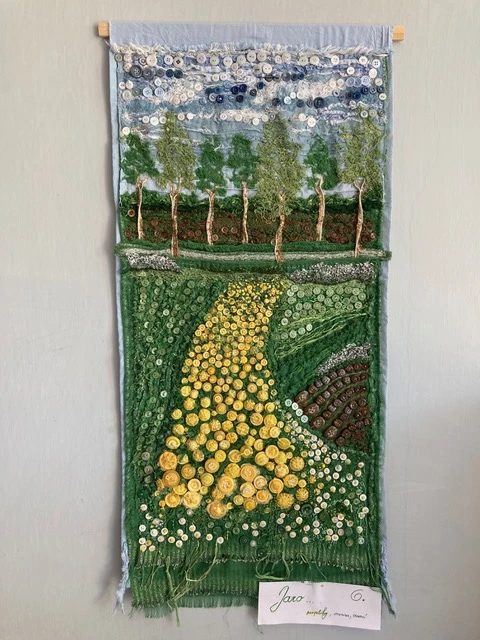 | 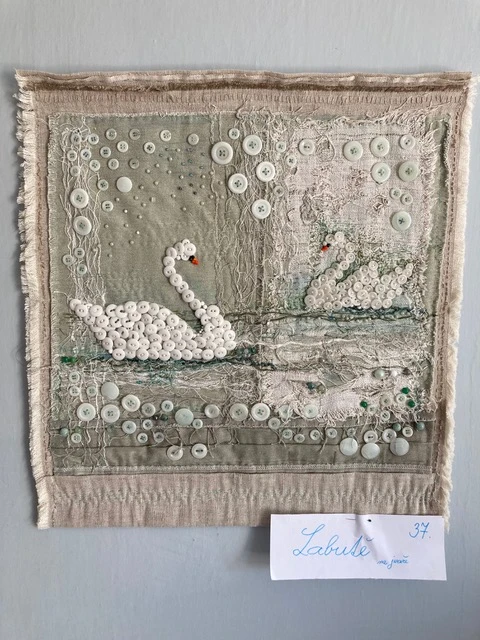 | 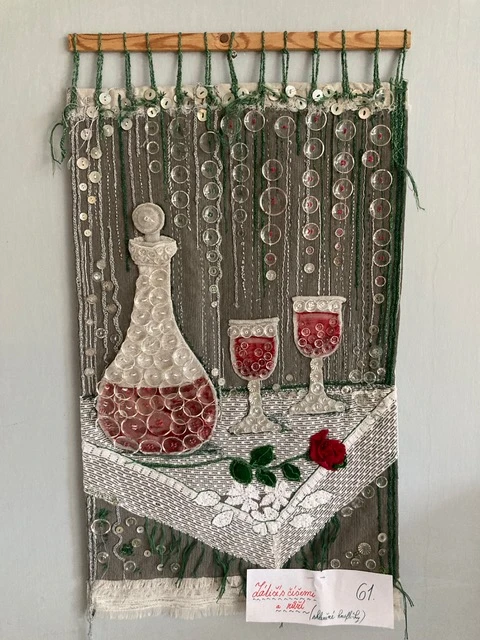 |
In Henrik Ibsen’s play Peer Gynt, there’s an allegorical character called the Button Moulder. Ibsen was inspired by real button molders who roamed Scandinavia into the late 19th century, collecting old, unused, and worn-out buttons and melting them down into new ones. Ibsen gives the character these lines:
"I’m the Button Moulder.
Here in this great ladle I melt down buttons from scrap metal,
I take the old ones, melt them anew,
and cast them into something new again."
Mrs. Bílková is a different kind of button moulder. She doesn’t need to melt buttons down—she uses them exactly as they are, full of history and memory, allowing them to live on through her art.
